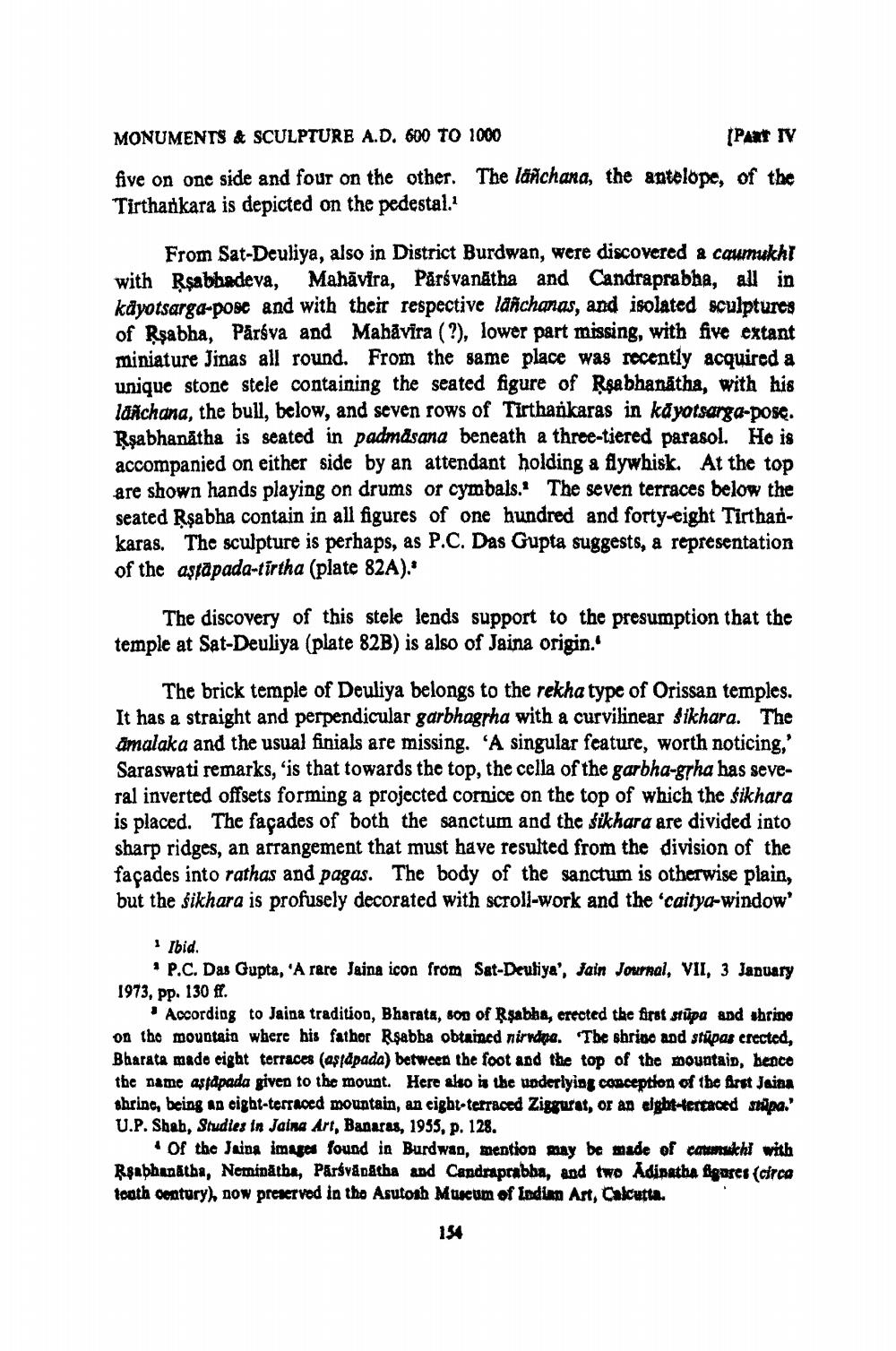________________
MONUMENTS & SCULPTURE A.D. 600 TO 1000
(PART TV five on one side and four on the other. The lañchana, the antelope, of the Tirthankara is depicted on the pedestal
From Sat-Deuliya, also in District Burdwan, were discovered a caumukhi with Rsabbadeva, Mahāvira, Pårsvanātha and Candraprabha, all in kdyotsarga-pose and with their respective lanchanas, and isolated sculptures of Rsabha. Päráva and Mahavira (?), lower part missing, with five extant miniature Jinas all round. From the same place was recently acquired a unique stone stele containing the seated figure of Rsabhanátha, with his lañchana, the bull, below, and seven rows of Tirtharkaras in kayotsarga-pose. Rsabhanātha is seated in padmasana beneath a three-tiered parasol. He is accompanied on either side by an attendant holding a flywhisk. At the top are shown hands playing on drums or cymbals. The seven terraces below the seated Rşabha contain in all figures of one hundred and forty-eight Tirtharkaras. The sculpture is perhaps, as P.C. Das Gupta suggests, a representation of the aştāpada-tirtha (plate 82A):
The discovery of this stele lends support to the presumption that the temple at Sat-Deuliya (plate 82B) is also of Jaina origin.'
The brick temple of Deuliya belongs to the rekha type of Orissan temples. It has a straight and perpendicular garbhagsha with a curvilinear sikhara. The amalaka and the usual finials are missing. 'A singular feature, worth noticing,' Saraswati remarks, 'is that towards the top, the cella of the garbha-gpha has several inverted offsets forming a projected cornice on the top of which the Sikh is placed. The facades of both the sanctum and the Sikhara are divided into sharp ridges, an arrangement that must have resulted from the division of the façades into rathas and pagas. The body of the sanctum is otherwise plain, but the Sikhara is profusely decorated with scroll-work and the 'caitya-window'
Ibid.
* P.C. Das Gupta, 'A rare Jaina icon from Sat-Deutiya', jain Journal, VII, 3 January 1973, pp. 130 ff.
According to Jaina tradition, Bharata, sop of Rsabha, erected the first stūpa and shrine on the mountain where his father Rşabba obtained nirudpa. The shrine and stūpas crected, Bharata made eight terraces (asidpada) between the foot and the top of the mountain, hence the name astdpada given to the mount. Here also in the underlying conception of the first Jaina shrine, being an eight-terraced mountain, an eight-terraced Ziggurst, or an eight-terraced szupa." U.P. Shab, Studies in Jaina Art, Banaras, 1955, p. 128.
of the Jaina imagen found in Burdwan, mention may be made of carbonich! with Rşabhanátha, Neminátha, Parsväpätha and Capdraprabba, and two Adinatha figures (circa tooth ovatury), now preserved in the Asutosh Museum of Indian Art, Calcutta.
154




